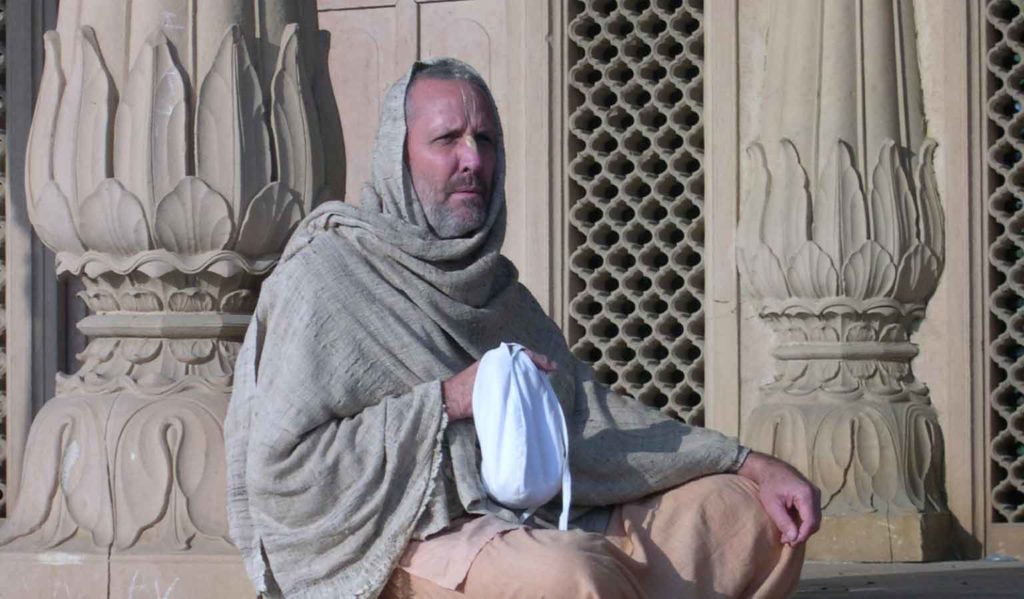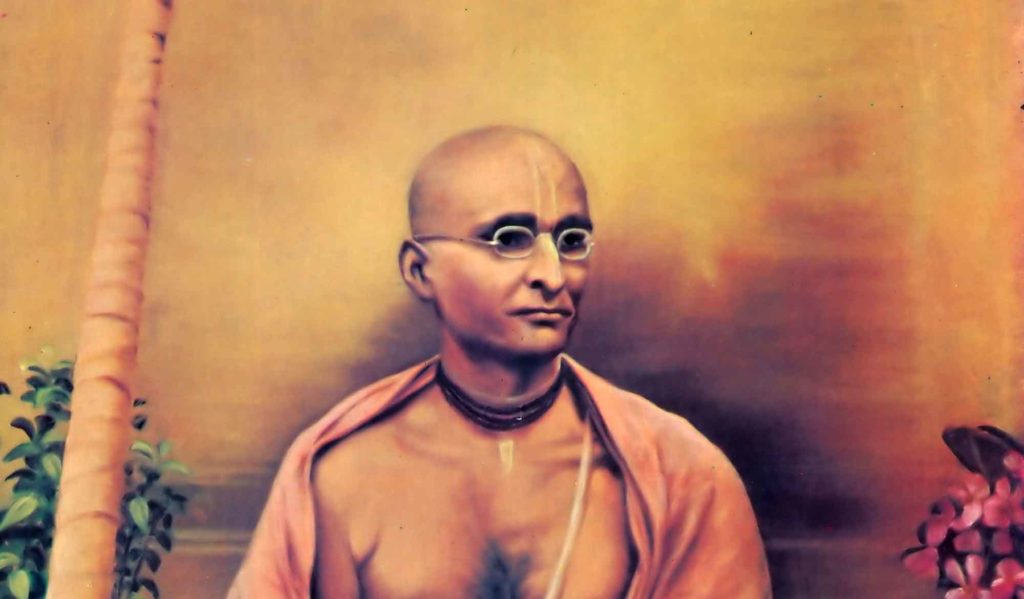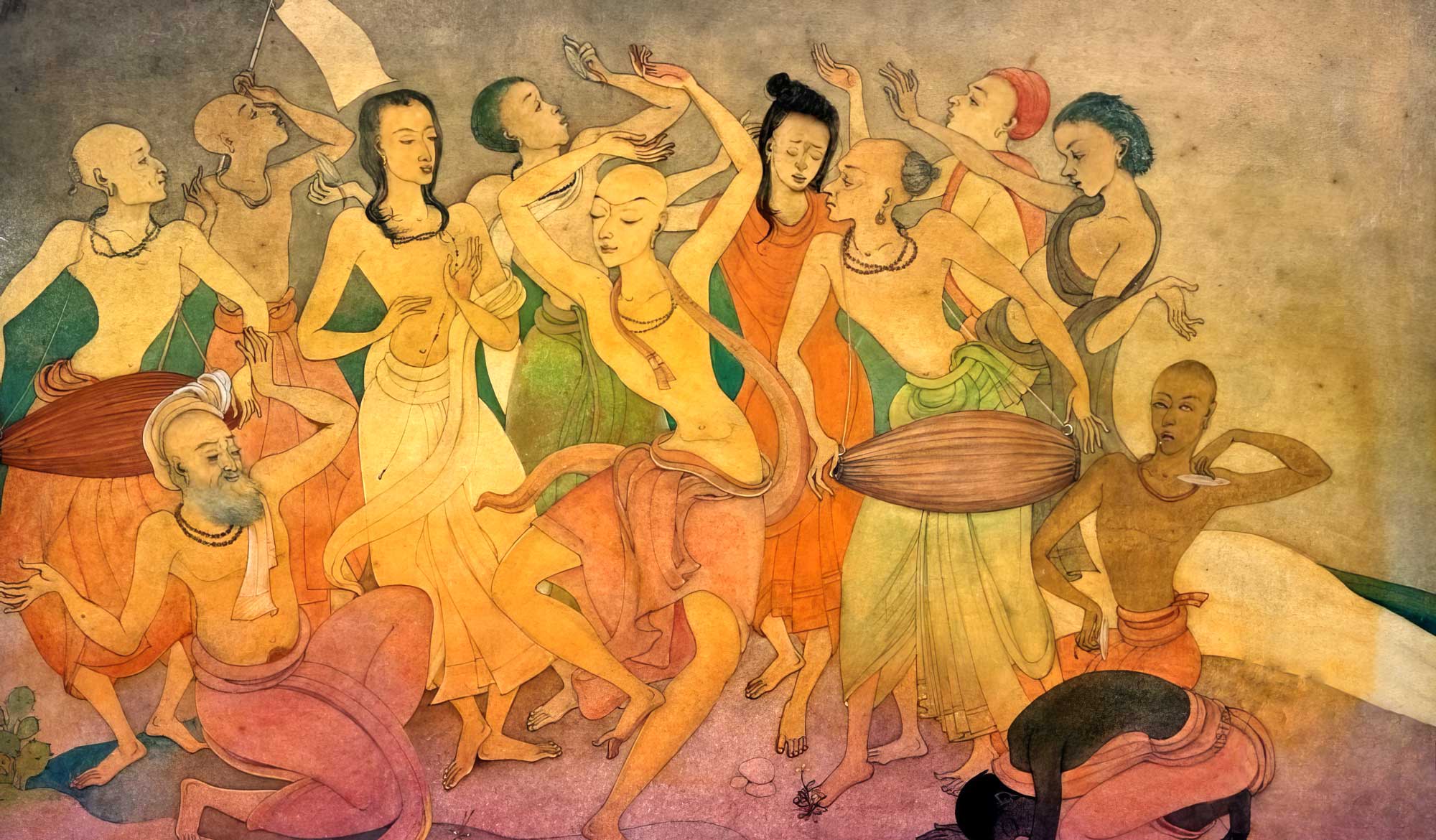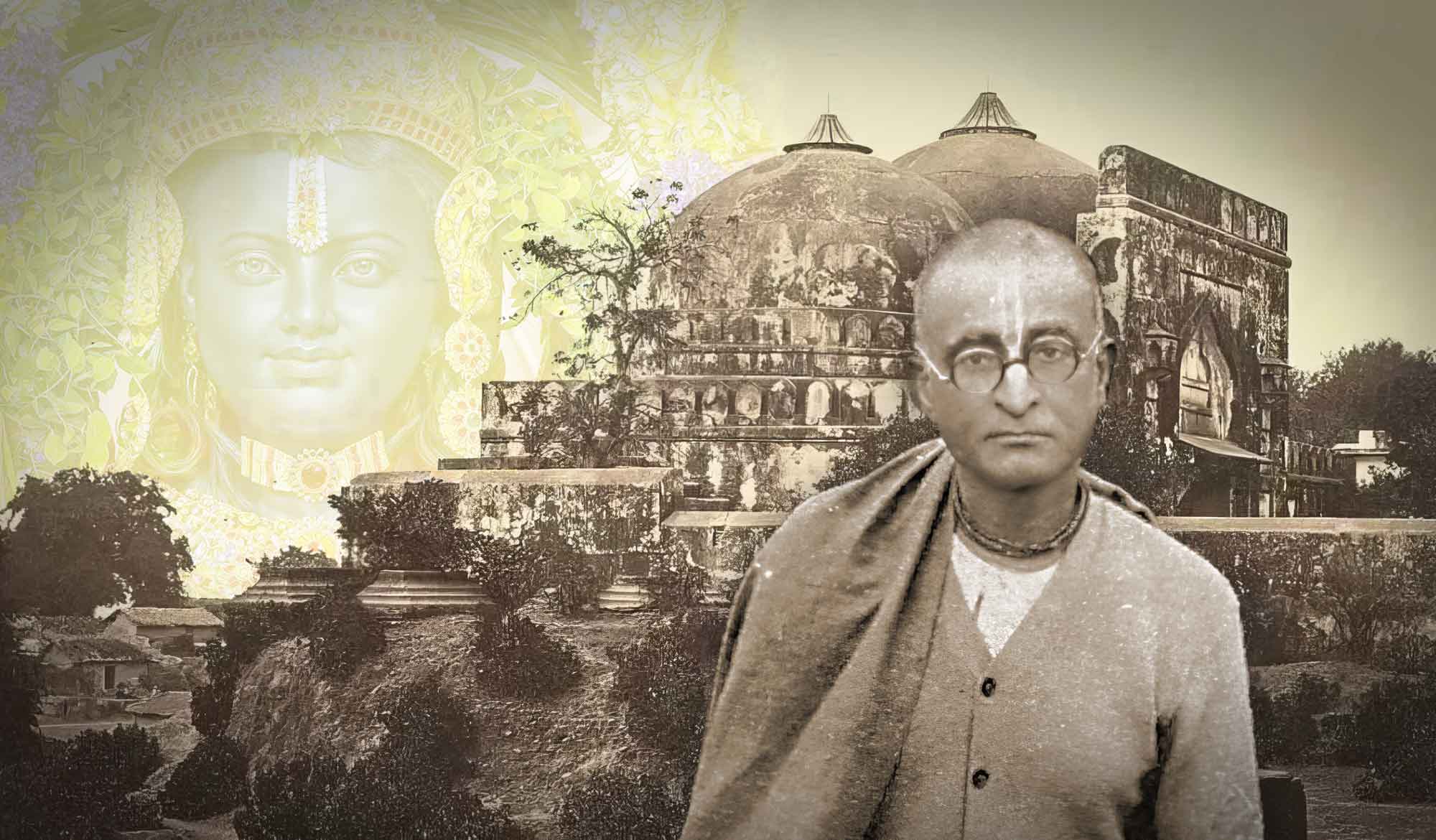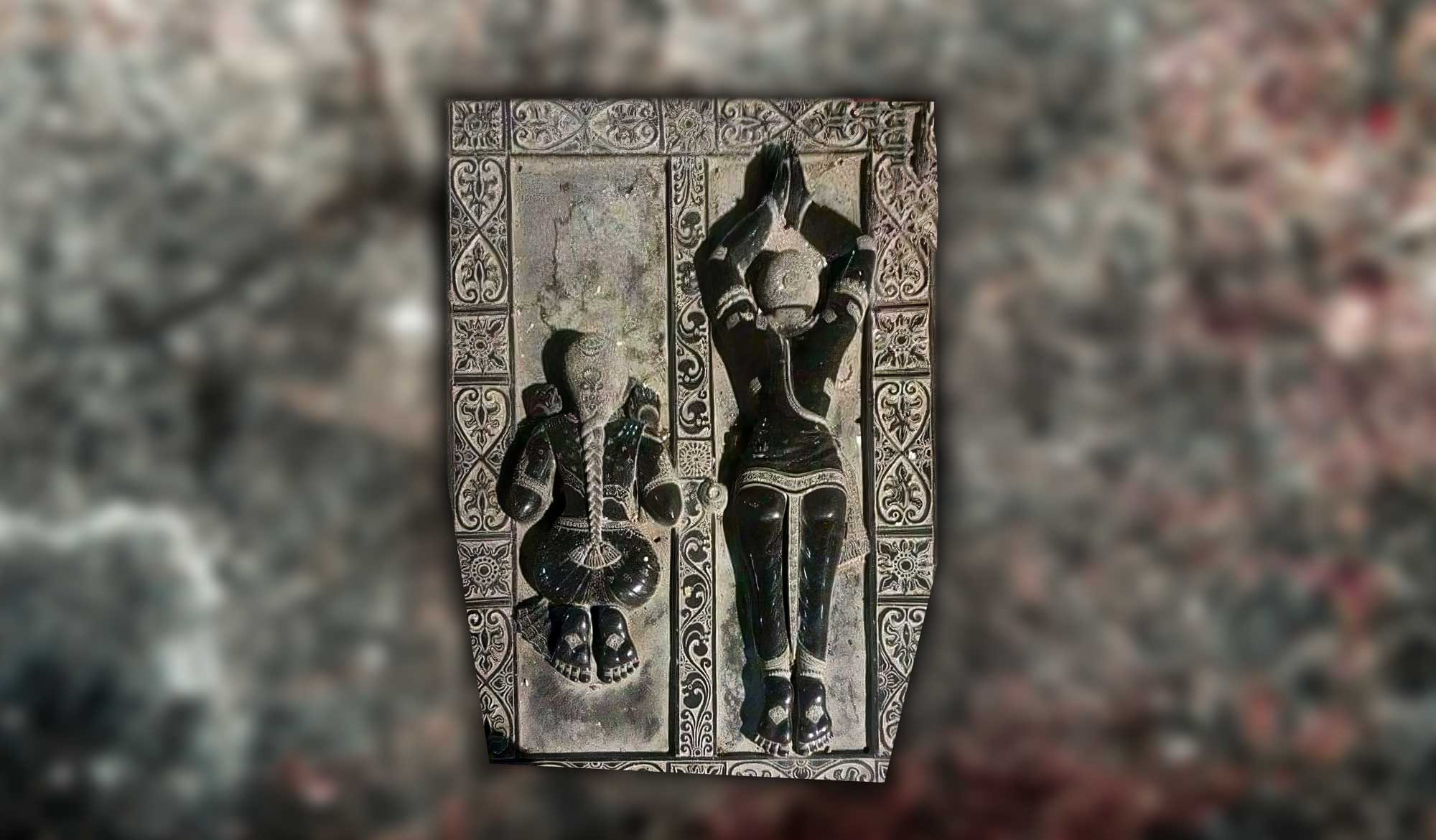Overview
“Avatāras in Every Species” is an article adapted from a class give on Śrīla Prabhupāda’s disappearance day, on October 31st 2000 at Rādhā-Dāmodara Temple by Śrīla Narasiṅgha Mahārāja. He explains how the Supreme Lord advents in every species of life to create auspiciousness for all living entities.
Question: I have a question, the answer to which should help me frame a paper I will write later this summer for an interfaith presentation on the topic of God among us: ‘A Catholic-Vaiṣṇava Dialog, the Incarnation and Avatāra.’ Śrī Kṛṣṇa appears in innumerable forms throughout the universes. Some forms appear to be human-like while others resemble lower species, such as the boar, fish, tortoise, etc. Śrīla Prabhupāda writes:
“In each and every universe there are innumerable planets inhabited by different grades of living entities in different modes of nature. The Lord (Viṣṇu) incarnates Himself in each and every one of them and in each and every type of living society. He manifests His transcendental pastimes amongst them just to create the desire to go back to Godhead. The Lord does not change His original transcendental position, but He appears to be differently manifested according to the particular time, circumstances and society.” (Bhāgavatam 1.2.34 purport)
The human form of life is the best for achieving self-realization. The activities of the animals are eating, mating, sleeping and defending. The animals cannot understand God. Yet, Śrīla Prabhupāda says that Kṛṣṇa is the friend of both human and animal society. I suppose if He appears among humans to deliver us, it would only be sensible that He appears among the animals to deliver them. I’m wondering if the dynamic is different among other species. When He appears among the humans or higher species, He can deliver those in His immediate association, and then His teachings are recorded to inspire posterity. When the Lord appears among the lower species, how does He deliver them? They cannot practice religion as humans do (though Lord Caitanya made deer, tigers and elephants chant Hare Kṛṣṇa and liberated the dog under Śivānanda Sena’s care). Does He deliver only the current generation among that species (after all, animals don’t maintain written historical records)? This may seem to be an obscure inquiry, and I’m probably not mature enough to understand the answer, but it came to mind, so I was wondering if the ācāryas offer us any insight into this matter.
Answer: The conception that God incarnates in the species of those living entities who are lower than human beings has always troubled the mind of the western theologian. Knowing this, Śrīla Bhaktivinoda Ṭhākura has dealt with the topic of the Lords incarnations in lower species in his book ‘Śrī Kṛṣṇa-saṁhitā.’ I suggest that you consult that book in detail before writing your proposed essay.
When the Lord appears in lower species He delivers those species by giving them auspiciousness due to His association. The living entities are then promoted to human life and there they are given a chance to come to God consciousness and love of God. That is my understanding. By the Lord’s association the living entity awakens a desire for God consciousness. This desire for God consciousness is also awakened by the association of pure devotees of the Lord and sometimes by ajñāta-sukṛti. Categorically the Lord appears in every species.
jalajā nava-lakṣāṇi sthāvarā lakṣa-viṁśati
kṛmayo rudra-saṅkhyakāḥ pakṣiṇāṁ daśa-lakṣaṇam
triṁśal-lakṣāṇi paśavaḥ catur-lakṣāṇi mānuṣāḥ
“There are 900,000 species living in the water. There are 2,000,000 non-moving living entities such as trees and plants. There are 1,100,000 species of insects and reptiles, and 1,000,000 species of birds. As far as quadrupeds are concerned there are 3,000,000 varieties, and there are 400,000 human species.”
That the Lord appears in all species of life, means that He appears in each category, not that He appears as each and every individual form like each and every type of fish, each kind of reptile, every type of quadruped (animal) etc. But in each category the Lord appears.
Among the aquatics in the water the Lord appears as Matsya-avatāra. Among the trees and plants He appears as dāru-brahman (the trees bearing the signs of Viṣṇu from which the Jagannātha Deities are then manifested) (banyan trees and others may also be considered as the Lord’s incarnation). Among the insects and reptiles, He appears as the vajrakīṭa (the worm from Vaikuṇṭha) that carves the signs on the śālāgrāma-śīlas and also as Ananta-śeṣa and Kūrma-avatāra, the tortoise. Among the birds He appears as Haṁsa-avatāra. Among the animals with four feet He appears as Varāha-avatāra. And among the humans He appears as Kṛṣṇa, Rāma, and Śrī Caitanya.
As stated above the Lord creates auspiciousness for the living entities in the lower species of life by appearing among them. This would benefit those living entities who directly associated with the particular incarnation and it would also benefit all future living entities appearing in that species. That is my understanding. If any species comes in contact with any avatar then there is certainly benefit for those living entities, without doubt. What to speak of the particular species — each and every time the Supreme Lord appears in this universe all the living beings present in the universe are benefited. Some are liberated directly and others are elevated and liberated after some time. The ways of the Supreme Lord are wonderful and sometimes difficult for the tiny brain to understand. Nonetheless, śraddhā (faith) tells us that the Lord is all-merciful, the friend of all living beings, and the knower of everything. How He is doing everything may be known to Him alone, but faith tells us that He is the doer of everything and whatever He does is for our benefit.
Related Articles
- 📖 When Wise Men Speak Wise Men Listen by Swami B.G. Narasiṅgha Mahārāja (Book)
- Greater Than the Upaniṣads and the Vedas by Śrīla Bhakti Rakṣaka Śrīdhara Deva Gosvāmī
- Religiosity – Real and Apparent by Śrīla A.C. Bhaktivedānta Swami Prabhupāda
- Kṛṣṇa – The Supreme Vedāntist by Śrīla A.C. Bhaktivedānta Swami Prabhupāda
- Rational Vedānta by Śrīla Bhakti Gaurava Narasiṅgha Mahārāja
- Real Religion is not Man-made by Śrīla Bhakti Gaurava Narasiṅgha Mahārāja
- More on ‘Real Religion is Not Man Made’ by Śrīla Bhakti Gaurava Narasiṅgha Mahārāja
- More on Christianity: Only Kṛṣṇa Consciousness Can Enhance Kṛṣṇa Consciousness by Śrīla Bhakti Gaurava Narasiṅgha Mahārāja
- Jesus as a Perfect Christian by Śrīla Bhakti Gaurava Narasiṅgha Mahārāja
- Swastika and Cross by Śrīla Bhakti Gaurava Narasiṅgha Mahārāja
- Star of David or Star of Goloka? by Śrīla Bhakti Gaurava Narasiṅgha Mahārāja
- Does God Exist? by Śrīla Bhakti Gaurava Narasiṅgha Mahārāja
- Tad Viṣṇoḥ Paramaṁ Padaṁ by Śrīla Bhakti Gaurava Narasiṅgha Mahārāja
- Have the Vedas Advanced Civilization? by Śrīla Bhakti Gaurava Narasiṅgha Mahārāja
- The Position of The Bhāgavata Amongst Religious Scriptures by Śrīla Bhakti Gaurava Narasiṅgha Mahārāja
- Avatāras in Every Species by Śrīla Bhakti Gaurava Narasiṅgha Mahārāja
- The History of the Bhagavad-gītā by Swami B.V. Giri
- Jesus in the Vedas by Swami B.V. Giri
- The Great Flood – Are Manu and Noah the Same Person? by Kalki Dāsa
- Zarathustra and The De-evolution of Theism by Kalki Dāsa
Further Reading
- Buddha-Gayā by Śrīla Bhaktivinoda Ṭhākura
- ‘Hindu’ by Śrīla Bhaktivinoda Ṭhākura
- Darśana-Śāstra (Philosophical Treatise) by Śrīla Bhaktivinoda Ṭhākura
- Sukhera Viṣaya (A Matter of Happiness) by Śrīla Bhaktivinoda Ṭhākura
- Śrī-Mūrti-sevā o Pautalikatā (Deity Worship and Idolatry) by Śrīla Bhaktivinoda Ṭhākura
- The Hindu Idols by Śrīla Bhaktivinoda Ṭhākura
- On Durga Siva and Kali in Their Exoteric Aspects: A Criticism on Max Muller by Śrīla Bhaktivinoda Ṭhākura
- Vedānta Darśana (The Vedānta Philosophy) by Śrīla Bhaktivinoda Ṭhākura
- The Bhagavat – It’s Philosophy It’s Ethics and It’s Theology by Śrīla Bhaktivinoda Ṭhākura
Pilgrimage with Swami Narasiṅgha – Part 7: Keśī Ghāṭa
Continuing with our pilgrimage series, this week Śrīla Narasiṅgha Mahārāja takes us to Keśī Ghāṭā where he tells us about Madhumaṅgala’s meeting with the Keśī demon, what Keśī represents, and how Śrīla Prabhupāda almost acquired Keśī Ghāṭa. Mahārāja also narrates his own experience. This article has been adapted from a number of talks and articles by Narasiṅgha Mahārāja.
Prema Dhāma Deva Stotram with the Narasiṅgha Sevaka Commentary – Verses 61-65
In verses 61 to 65 of 'Prema Dhāma Deva Stotram', Śrīla Śrīdhara Mahārāja narrates the pastime of Śrī Caitanya at Caṭaka Parvata In Purī and explains how the scriptures produced by Brahmā and Śiva are ultimately searching for the personality of Mahāprabhu who is merciful too all jīvas, no matter what their social position.
Prabhupāda Śrīla Sarasvatī Ṭhākura’s Visit to Ayodhyā
With the forthcoming observance of Śrī Rāma Navamī, we present 'Prabhupāda Śrīla Sarasvatī Ṭhākura’s Visit to Ayodhyā' written by Śrīla Bhaktisiddhānta Sarasvatī Ṭhākura Prabhupāda from The Gaudīyā magazine, Vol 3. Issue 21/ In December 1924, after visiting Benares and Prāyāga, Sarasvatī Ṭhākura visited the birth-site of Śrī Rāmācandra in Ayodhyā.
Śaraṇāgati – The Only Path to Auspiciousness
In this article, 'Śaraṇāgati - The Only Path to Auspiciousness', Dhīra Lalitā Dāsī analyses the process of śaraṇāgati (surrender) beginning with śraddhā (faith). She also discusses the role of śāstra and the Vaiṣṇava in connection with surrender.
Pilgrimage with Swami Narasiṅgha – Part 7: Keśī Ghāṭa
Continuing with our pilgrimage series, this week Śrīla Narasiṅgha Mahārāja takes us to Keśī Ghāṭā where he tells us about Madhumaṅgala’s meeting with the Keśī demon, what Keśī represents, and how Śrīla Prabhupāda almost acquired Keśī Ghāṭa. Mahārāja also narrates his own experience. This article has been adapted from a number of talks and articles by Narasiṅgha Mahārāja.
Prema Dhāma Deva Stotram with the Narasiṅgha Sevaka Commentary – Verses 61-65
In verses 61 to 65 of 'Prema Dhāma Deva Stotram', Śrīla Śrīdhara Mahārāja narrates the pastime of Śrī Caitanya at Caṭaka Parvata In Purī and explains how the scriptures produced by Brahmā and Śiva are ultimately searching for the personality of Mahāprabhu who is merciful too all jīvas, no matter what their social position.
Prabhupāda Śrīla Sarasvatī Ṭhākura’s Visit to Ayodhyā
With the forthcoming observance of Śrī Rāma Navamī, we present 'Prabhupāda Śrīla Sarasvatī Ṭhākura’s Visit to Ayodhyā' written by Śrīla Bhaktisiddhānta Sarasvatī Ṭhākura Prabhupāda from The Gaudīyā magazine, Vol 3. Issue 21/ In December 1924, after visiting Benares and Prāyāga, Sarasvatī Ṭhākura visited the birth-site of Śrī Rāmācandra in Ayodhyā.
Śaraṇāgati – The Only Path to Auspiciousness
In this article, 'Śaraṇāgati - The Only Path to Auspiciousness', Dhīra Lalitā Dāsī analyses the process of śaraṇāgati (surrender) beginning with śraddhā (faith). She also discusses the role of śāstra and the Vaiṣṇava in connection with surrender.


